Hong Kong’s Warning Signs for America
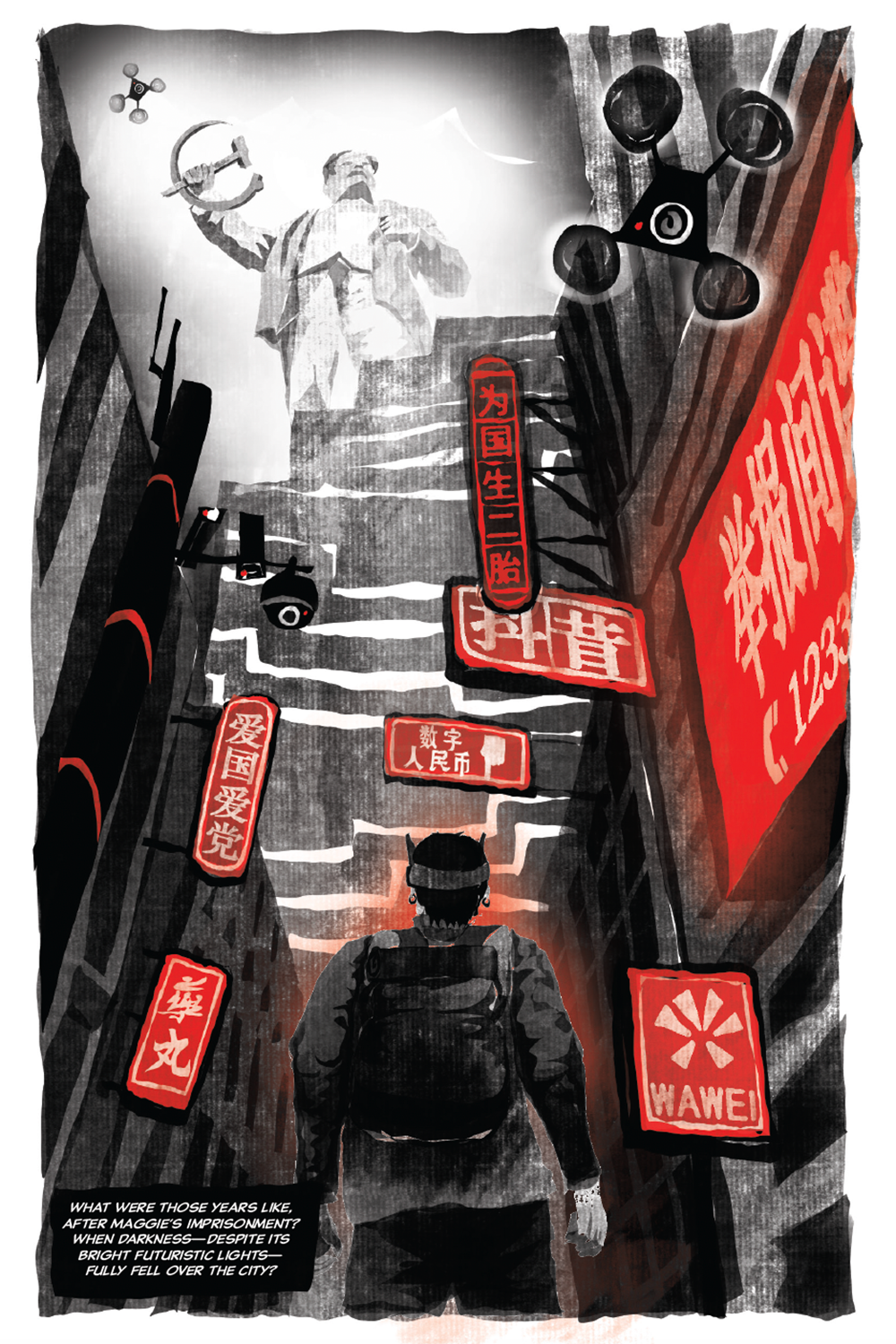
Images from “You Must Take Part in Revolution: A Graphic Novel.” Street Noise Books
Review
Hong Kong’s Warning Signs for America
A graphic novel plays out a nightmarish scenario of authoritarianism in the hopes of waking us up.
In just the law few weeks, the Trump administration has attempted to deport student protestors on the basis of their pro-Palestine views; enlisted police to help execute what Democratic lawmakers described as a “hostile takeover” of the U.S. Institute of Peace, a congressionally funded think tank; and claimed falsely that Kyiv, not Moscow, was responsible for starting the war in Ukraine. These are the kinds of headlines that people have come to expect from China and other authoritarian countries—less so the United States.
Against this backdrop, journalist Melissa Chan and Chinese activist-artist Badiucao recently released their debut graphic novel, You Must Take Part in Revolution. Following in the tradition of graphic novels such as Maus and Persepolis, the book grapples with autocracy and resistance, charting the journey of three activists as they confront the 2019 Hong Kong protests and a 2035 future of war between China and the United States, which are both under the grip of authoritarianism.
In just the law few weeks, the Trump administration has attempted to deport student protestors on the basis of their pro-Palestine views; enlisted police to help execute what Democratic lawmakers described as a “hostile takeover” of the U.S. Institute of Peace, a congressionally funded think tank; and claimed falsely that Kyiv, not Moscow, was responsible for starting the war in Ukraine. These are the kinds of headlines that people have come to expect from China and other authoritarian countries—less so the United States.
You Must Take Part in Revolution: A Graphic Novel, Badiucao and Melissa Chan, Street Noise Books, 264 pp., $23.99, March 2025
Against this backdrop, journalist Melissa Chan and Chinese activist-artist Badiucao recently released their debut graphic novel, You Must Take Part in Revolution. Following in the tradition of graphic novels such as Maus and Persepolis, the book grapples with autocracy and resistance, charting the journey of three activists as they confront the 2019 Hong Kong protests and a 2035 future of war between China and the United States, which are both under the grip of authoritarianism.
The authors embarked on the project more than four years ago, but it appears particularly prescient today. “We wanted to create a very dark story so that society could prepare for the worst-case scenario,” Badiucao said at a book event hosted by Human Rights Watch in Washington, D.C., last month. He added that President Donald Trump’s return to the White House makes the story “more timely and relevant, and perhaps less fictional.”
Journalist Melissa Chan and Chinese activist-artist Badiucao.Street Noise Books
Both authors are familiar with the shadow of authoritarianism. Chan, a Chinese American journalist now based in Berlin, has long documented the global rise of autocracy. She was forced to leave China in 2012 when authorities refused to renew her journalism visa. She returned to the United States, where, in her coverage of rural America, she started to see signs of fascism emerging from the far right.
Badiucao, a Shanghai-born artist now based in Australia, has been protesting the Chinese Communist Party (CCP) through his art for more than a decade. His works—which range from street art to portraiture, usually with a heavy dose of satire—have become powerful symbols of dissent. Notable examples include a sketch marking the passing of Nobel Peace Prize laureate Liu Xiaobo, who died of cancer in 2017 after nearly eight years of imprisonment in China, and posters for the 2022 Beijing Winter Olympics showing, amongst other subversive drawings, Chinese athletes tackling a Tibetan monk and skating over a Hong Kong flag. Badiucao was forced to cancel his first solo exhibition in Hong Kong in 2018 after Chinese authorities threatened his family members, and since then, Chinese diplomats have repeatedly attempted to shut down his exhibitions abroad.
In the graphic novel, Badiucao uses an ink brush style evocative of traditional Chinese painting and a dark palette to conjure a grim world of Chinese and U.S. authoritarianism. Splashes of yellow, used to illuminate elements of resistance, are the main exception. The color alludes to the real history of protest against the CCP: Operation Yellow Bird smuggled protestors out of China through Hong Kong after the 1989 Tiananmen Square massacre in Beijing, and yellow umbrellas became the symbol of the Hong Kong protests starting in 2014.
The story itself starts with scenes that hew closely to the reality of the 2019 Hong Kong protests, which built off of the 2014 wave and saw millions of people take to the streets to oppose the CCP’s increasing encroachment on the Hong Kong legal system.
Reflecting Chan’s and Badiucao’s own hyphenated identities, the main characters converge at the protests from three different backgrounds: Maggie from Hong Kong, Olivia from mainland China, and Andy from the United States seeking to reconnect with his Chinese roots. They meet by chance one day at a march and become fast friends, but their paths quickly diverge from there.
The force that divides them is violence and their willingness to partake in it. (Warning: spoilers ahead.) Facing an increasingly aggressive government response to the protests, Maggie grows frustrated. In one emblematic exchange, she lashes out at Andy, whose parents participated in the 1989 Tiananmen protests, arguing that peaceful methods are no match for the regime, then or now. The situation rapidly escalates: Maggie resorts to setting bombs outside a police station and inadvertently kills a baby, landing herself in prison, forever racked with guilt.
In the book, the protests die out, mirroring the reality in Hong Kong, where the government quashed nearly all dissent through the imposition of a new National Security Law in 2020 and the widespread arrest of activists thereafter.
Years after Maggie’s arrest and the death of the protests, Andy, once an advocate for peace, also finds himself taking up arms. He heads to Taiwan, which now openly hosts a U.S. military base, to join the U.S. forces. There he bumps into Olivia, who fled Hong Kong after Maggie’s arrest. She turns out to have been a double agent from the beginning—drawn to Beijing’s cause by the death of her father, who served as a Chinese soldier during the Tiananmen protests. In Taiwan, she leverages her friendship with Andy to gain access to the U.S. base and pass intel back to Beijing.
The story crescendos to a bloody 2035. The United States has fallen under a “proto-fascist” government and ends up in an outright war with China after nationalism on both sides stokes the flames of a skirmish in Guam. The authors don’t spend much time describing the mechanics of escalation; rather, they quickly arrive at a worst-case scenario: China dropping a nuclear bomb in the heart of Taipei.
In the wake of such devastation, wrought so carelessly, the three friends converge one last time at the Hong Kong prison where Maggie is held. While Andy is on his way by boat from Taiwan to free Maggie and other prisoners, Olivia—who has become disillusioned with the Chinese cause after the bomb—finds Maggie inside of her cell. Together they reflect on a question long debated by activists, scholars, and philosophers: For what they believed to be righteous causes, was violence justifiable?
The two friends ultimately both decide that their ends did not justify their means. “I still believe that democracy is the only future. … But I understand that fighting for freedom comes at a cost. That cost is compassion,” Maggie says. “We are wreckages of human ambition and power.”
The novel’s dark plot can feel excessive at times, as if the authors decided to throw all possible nightmares of our age on the page. Robot dogs—built with the labor of imprisoned activists—patrol the streets in Hong Kong. Asian Americans are rounded up in the United States by a white nationalist government in an echo of World War II Japanese internment camps. And, ultimately, nuclear war returns.
But as Badiucao said at the event, that is by design. The book plays out our nightmares with the hope of waking us up before it is too late. The plot will hopefully remain fictional, but its many warnings bear heeding—and Chan said she chose the graphic novel format to break through with audiences that think tank reports and investigative articles haven’t always reached.
Perhaps most pertinent to the current moment, the novel forces readers to confront the possibility that the United States might increasingly resemble China. It isn’t the first to do so; recent nonfiction books such as Josh Chin and Liza Lin’s Surveillance State have also turned their gaze at authoritarian strains in the United States. But You Must Take Part in Revolution arrives at a particularly pressing moment.
In the face of these trends, the authors urge readers to take the title seriously. The line is a quote from former Chinese leader Mao Zedong, but Badiucao said they used it to “reclaim” the word “revolution,” which he sees as polluted in the Orwellian sense by the CCP.
As for what that revolution should look like, Chan and Badiucao have no easy answers. In the story, peaceful protests seem to fail, but the characters come to reject violence. Instead of providing a road map for resistance, the authors said their main intention was to provide an empathetic portrayal of the wrenching choices activists make when facing repressive governments.
Given the immense challenge of those individual fights, they see it as key to link together the global struggles against authoritarianism, as they do in the book.
For that reason, Badiucao shies away from the label “Chinese dissident” and instead prefers the broader term “human rights defender” to describe himself. “I believe dissident is something that has a very limited target. If you’re a Chinese dissident, you’re against Chinese government, or if you’re a Cuban dissident, you are against the Cuban regime,” he said at the HRW event. By using “human rights defender,” he added, you’re “providing a belief that human rights are universal, which means that you’re holding the standard equally, criticizing what is happening in China as well as not shying away from the present problems in America.”
Books are independently selected by FP editors. FP earns an affiliate commission on anything purchased through links to Amazon.com on this page.
Lili Pike is a reporter at Foreign Policy. X: @lili_pike
More from Foreign Policy
-

An illustration shows a golden Cybertruck blasting through a U.S. seal of an eagle holding arrows and laurel. Is America a Kleptocracy?
Here’s how life could change for the rich, poor, and everyone in between.
-

The flag of the United States in New York City on Sept. 18, 2019. America Is Listing in a Gathering Storm
Alarms are clanging at the U.S. geographic military commands around the globe.
-

U.S. President Donald Trump shakes hands with Supreme Court Chief Justice John Roberts during Trump’s inauguration in Washington, D.C. The U.S. Judicial Crisis Is Uniquely Dangerous
But other democracies provide a roadmap for courts to prevail over attacks from the executive branch.
-

An illustration shows a golden Newtons cradle with Elon Musk depicted on the one at left and sending a globe-motif ball swinging at right. Elon Musk’s First Principles
The world’s richest man wants to apply the rules of physics to politics. What could go wrong?

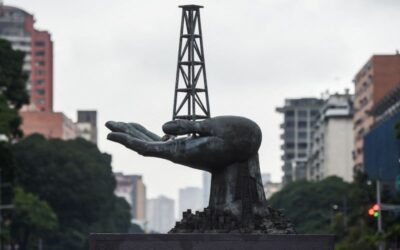
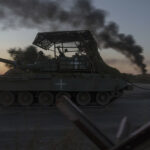









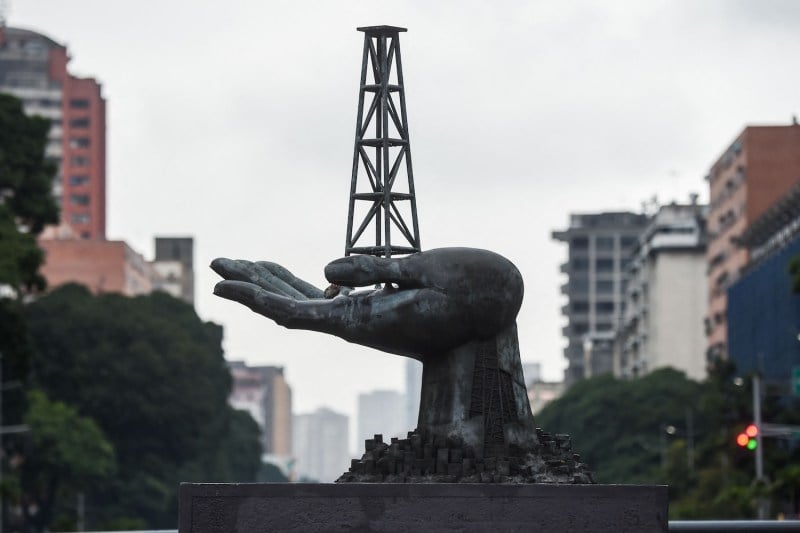
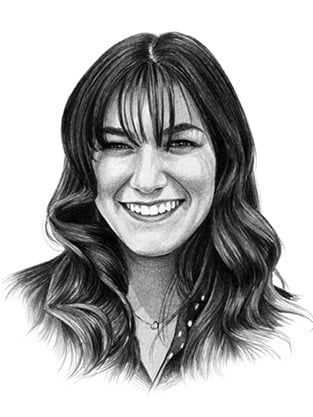

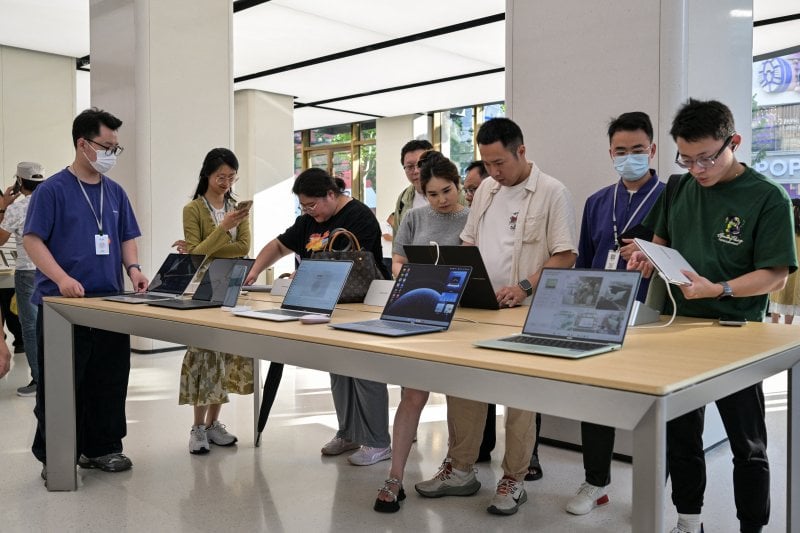
Join the Conversation
Commenting on this and other recent articles is just one benefit of a Foreign Policy subscription.
Already a subscriber?
.
Subscribe
Subscribe
View Comments
Join the Conversation
Join the conversation on this and other recent Foreign Policy articles when you subscribe now.
Subscribe
Subscribe
Not your account?
View Comments
Join the Conversation
Please follow our comment guidelines, stay on topic, and be civil, courteous, and respectful of others’ beliefs.
Change your username |
Log out
Change your username:
CANCEL
Confirm your username to get started.
The default username below has been generated using the first name and last initial on your FP subscriber account. Usernames may be updated at any time and must not contain inappropriate or offensive language.